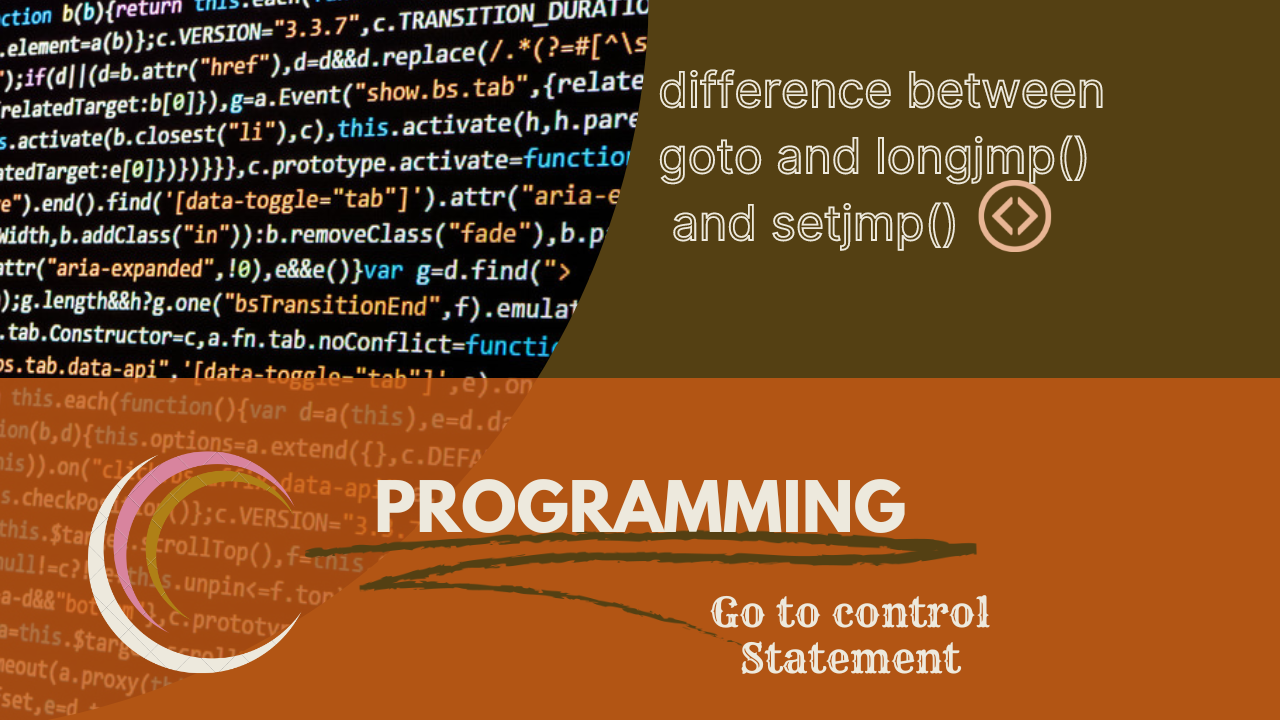
What is the difference between goto and longjmp() and setjmp()?
Understanding Differences: goto vs setjmp()/longjmp() in C with Excel Block
A goto statement implements a local jump of program execution, and the longjmp() and setjmp() functions implement a nonlocal, or far, jump of program execution. Generally, a jump in the execution of any kind should be avoided because it is not considered good programming practice to use such statements as goto and longjmp in your program.
Both goto and setjmp()/longjmp() are control flow mechanisms in C programming, but they serve different purposes and have distinct use cases.
1. goto Statement: The goto statement is used for unconditional branching within a function. It allows you to jump from one part of the code to another labeled part. However, the misuse of goto can lead to "spaghetti code" and make the code harder to read and maintain. It's generally considered a good practice to avoid using goto whenever possible.
2. setjmp() and longjmp() Functions: setjmp() and longjmp() are functions provided by the C Standard Library for more structured control flow. They are typically used for implementing non-local jumps, often for handling exceptional conditions or error scenarios.
- setjmp(): This function sets up a point to which the program can jump back using longjmp(). It saves the current state of the calling environment, including registers and the call stack, into a buffer.
- longjmp(): This function performs a jump to the point specified by a setjmp() call, restoring the saved state. It effectively "unwinds" the call stack and returns to the specified point.
A common use case for setjmp()/longjmp() is handling errors that occur deep within nested function calls. Instead of propagating error codes through all the layers of function calls, you can use these functions to directly jump back to a higher-level error handling routine.
It's important to note that the use of setjmp() and longjmp() can be error-prone and lead to code that is difficult to reason about, especially in larger projects. Their misuse can make debugging and maintenance challenging.
In summary, while both goto and setjmp()/longjmp() are mechanisms for controlling program flow, goto is generally used for local control flow within a function, whereas setjmp() and longjmp() are used for non-local jumps, often for error handling scenarios. However, due to their complexity and potential for creating hard-to-maintain code, caution is advised when using setjmp() and longjmp().
Difference Between Goto and setjmp()/longjmp()
| Aspect | goto Statement | setjmp()/longjmp() Functions |
|---|---|---|
| Purpose | Unconditional local branching | Non-local jumps for error handling |
| Scope | Within a single function | Across functions and nested calls |
| Control Flow Clarity | Can lead to "spaghetti code" | Can make code non-linear and complex |
| Error Handling | Not primarily designed for error handling | Primarily used for error handling |
| Code Readability | Can reduce readability in some cases | Can make code harder to understand |
| Best Practice | Generally recommended to be avoided | Should be used carefully and sparingly |
| Example | if conditions, loop control | Deeply nested function error handling |

